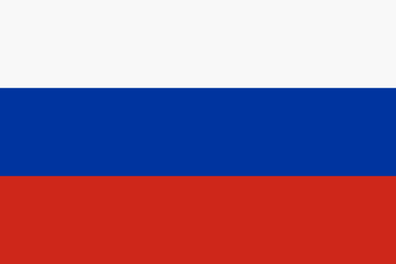Donate to Support Supercluster
Your support makes the Astronaut Database and Launch Tracker possible, and keeps all Supercluster content free.
SUPPORTSupercluster on Patreon
Your support makes the Astronaut Database and Launch Tracker possible, and keeps all Supercluster content free.
SUPPORTThis goes
to space
Arktika-M
Arktika-M is a Russian polar meteorological mission proposed and operated by the Russian Federal Space Agency (ROSCOSMOS) and assisted by the Russian Federal Service for Hydrometeorology and Environmental Monitoring (ROSHYDROMET). The project definition phase started in 2007. The scenario involves two satellites in HEO (Highly Elliptical Orbit - i.e., Molniya-type orbits) with an inclination of 63.4°, and an orbital period of approximately 12 hours. This configuration would allow a quasi-permanent coverage of high-latitude areas for weather, ice and snow monitoring as well as for telecommunications and data collection.
Major errors in statistical weather forecasts can be explained by initial data discrepancies. Most initial weather data for the Arctic regions comes from international geostationary satellites, which cannot effectively scan the Earth's high latitudes. Their angles of observation do not exceed ±70°, meaning they cannot effectively observe higher than ±60° of latitude. However, a quasi-static Molniya system is ideally suited for feature tracking in polar regions and fully complements the data obtained from geostationary satellites.
The Arktika system concept is capable of monitoring the weather and environment of the North Pole, pinpointing hydrocarbon deposits on the Arctic shelf, providing telecommunications over the hard-to-access areas and ensuring safe air traffic and commercial shipping in the region. The vast hydrocarbon deposits that will become more accessible as rising global temperatures lead to a reduction in sea ice have brought the Arctic to the centre of geopolitical wrangling between the United States, Russia, Canada, Norway, and Denmark.
The Arktika mission is planned to eventually comprise 10 Earth-orbiting satellites: the two of Arktika-M, the three commercial satellites of Arktika-MS1, the three communication and GPS satellites of Arkitka-MS2, and the two remote sensing satellites of Arktika-R. The advantage of this approach is to have full-time coverage of the polar regions which is currently not provided by the GEO satellites).
The Arktika program is supported by the Russian Economic Development Ministry. In 2010, the ministry examined the Roskosmos proposals and deemed the program necessary to create such a system, and has now proposed to the government that Arktika be introduced from 2014 onwards.
Russia plans to make Arktika an international cooperative program. The WMO (World Meteorological Organization) encourages the space agencies of the world to participate in the Arktika mission.
Credit: ESA

On this
rocket
Soyuz 2.1b/Fregat
Meet Roscosmos’s 21st-century upgrade of the Soyuz rocket: the Soyuz 2.1b.
One of the most significant advancements in this variant is the completely digital flight control system, a major technological leap for a rocket family originally designed in the 1960s.
Specs
Height: 46.3 m (152 ft)
Diameter: 2.95 m (9 ft 8 in)
Mass: 312,000 kg (688,000 lb)
Stages: 2 or 3
The digital flight control system enhances launch precision and target accuracy, making the Soyuz 2.1b more reliable for a wide range of missions.
Additionally, this variant features an upgraded Blok-I second-stage engine, the RD-0124, which provides improved performance and efficiency over earlier models.
The Soyuz 2.1b was the second of three Soyuz 2 variants to enter service, making its debut launch on December 27, 2006.
Two Names, Two Flags
This rocket flies under two different names, depending on the launch operator:
- Soyuz 2.1b: When launching under Roscosmos from Baikonur or Plesetsk.
- Soyuz ST-B: When sold to Arianespace for European launches. This version includes European modifications, such as a European payload adapter and a European flight termination system.
Image: ESA

From this
launch site
Site No. 31/6 - Baikonur Cosmodrome, Kazakhstan
Site 31/6 – Baikonur Cosmodrome
Site 31/6 has been an active launch pad at Baikonur Cosmodrome since January 14, 1961. Over its long history, it has supported launches of numerous Soviet and Russian rockets, including the R-7A, Vostok, Voskhod, Polyot, Molniya, and earlier versions of the Soyuz family. Originally constructed as a backup to Site 1/5 (Gagarin's Start), it has become a crucial launch facility, especially for uncrewed satellite and robotic missions.
Currently, Site 31/6 is used exclusively for launching the Soyuz-2 rocket family, including Soyuz-2.1a, Soyuz-2.1b, and Soyuz-2.1v. As Russia transitioned from the Soyuz-FG rocket to the digital flight-controlled Soyuz-2.1a, the pad began supporting crewed Soyuz MS missions to the International Space Station (ISS) in April 2020, ensuring continued access to orbit for Russian and international astronauts.
Baikonur Cosmodrome
Located in southern Kazakhstan, Baikonur Cosmodrome is the world’s first and largest operational spaceport. It is historically significant as the launch site of Sputnik 1, the world’s first artificial satellite, in 1957, and Yuri Gagarin’s pioneering human spaceflight on April 12, 1961.
Initially constructed as the primary launch base of the Soviet Union, Baikonur remained a key spaceflight center after the USSR’s dissolution. In 1994, the newly independent Kazakhstan leased Baikonur to Russia under a long-term agreement, currently extended until 2050. The site continues to host a wide range of missions, from crewed spaceflights to interplanetary probes.
Baikonur is jointly operated by Roscosmos, the Russian federal space agency, and the Russian Aerospace Forces, the military branch responsible for space operations. While Russia is shifting some launches to its newer Vostochny Cosmodrome, Baikonur remains the primary launch site for Soyuz human spaceflight missions and numerous commercial and government payloads.
Image courtesy of GK Launch Services / Roscosmos

Here's where to view Arktika-M N2
Viewing Sites
GET THE SUPERCLUSTER APP
THE SUPERCLUSTER PODCAST
A podcast exploring the amazing milestones that changed space history, the wildest ideas that drive our future, and every development in this new Golden Age of Space.
Donate to support
Your support makes the Astronaut Database and Launch Tracker possible, and keeps all Supercluster content free.
SupportCOPYRIGHT 2021 SUPERCLUSTER LLC

